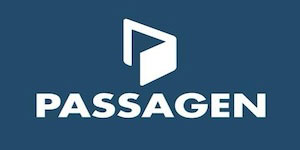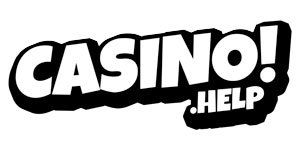Comics Interview: Dissected – Issue #6
Welcome to the latest instalment of a brand-new feature here on Nerdly, where one of our comic gurus, Ian Wells, delves into comics history and dissects Comics Interview, the long-running journal of interviews and criticism from David Anthony Kraft.

A Yak With Dak
The up front is entirely dedicated to further talking up the upcoming Don McGregor James Bond magazine. To clarify my understanding from the last issue it is a one-shot magazine and not a comic. I did have a look for it on eBay and on comicvine.com which has a huge database of comics and magazines, but I couldn’t find a trace of it anywhere so did it actually release? I will dig further or if anyone knows hit me up. Like I have said before it has been mentioned in every issue of CI and even now in #6 DAK is pleading with people to be patient as it goes to the printers. A quick note on the letters column as I dropped a massive ball in recent issues. On Twitter @EclecticLeeS got in touch to have a go at guessing the different fonts in the Comics Interview logo. This got me to revisit the letters pages and here I noticed letters from two people of note I had previously overlooked. The first was Peter Sanderson, the famous critic and historian. His Ultimate X-Men book from DK (2000) was my bible for years after coming to comics from the X-Men movie. The second was a letter from Valentino with a California address. I am assuming this to be Jim Valentino.
The Greatest Story Never Told?
It’s 1983 and superstar artist George Perez has commenced work on a JLA/Avengers crossover. Following in the steps of Superman/Spider-Man. Every DC editor who has thus far been interviewed in Comics Interview has teased it, but all well-trained comic fans will know it never happened. Reed Tucker’s excellent book Slugfest deals with the tumultuous history of the DC/Marvel crossovers, it goes into much better detail than I ever could. Whilst the previous crossovers were huge success after all the red tape was cleared my opinion is that this would have been a tougher sell for both companies. The Justice League and Avengers in 1983 weren’t the superstars they are today. Perez in the interview seems very excited for the project and has worked on it since’81! Perez’s answer to the second question “On a project like this, who all has a say over it?” yields a near enough two-page answer, all boiling down to it being a pissing contest between editors. At the time of this interview the book is already 3 months late and there are serious doubts it will even go to print. Perez calls it a sham, which has led to him being put off the upcoming sequel to the successful Teen Titans/X-Men crossover. There are 3 draw-dropping amazing pages of pencils alongside the interview and it is easy to see why George Perez is hailed as one of the best. Perhaps though that image of Cap taking Batman’s boot to the face didn’t sit well with Jim Shooter! I like how the interview is very much just about digging into the nonsense behind this failed project, there is no talk bout Perez’s career tact. It is raw, heat-of-the-moment journalism. You feel Perez’s emotion reading it, he is not happy. He rejected a Black Widow cover because it angered him so much and has taken two projects with Pacific. A great way to kick off the issue.
Wendy & Richard Pini – Part 2
The last issue provided a very informative interview with Wendy and Richard Pini despite it taking a rather serious note towards the end. There wasn’t anything in the interview that made me want to read Elfquest but it was enjoyable reading two people talk passionately about creating comics in the independent landscape. There is a lot to take away from this interview if you are new to self-publishing, they lay down some home truths. “What makes a genuine alternative comic is a strong personal vision.” Most crucial is maintaining an interest in your own work, especially if it is a finite series where you know the end. Sometimes it is a case of detaching from the emotion and working well out of sequence to deliver the story. A by-product of the Direct Market is picking up a niche audience. Elfquest has always been an all-ages title from launch, but the increase in comic stores has seen a heterogeneous audience grow. Recently #15 came with a parental warning before reading it with children. But Richard and Wendy feel they don’t have to censor themselves when creating new stories as over the series they have grown. Richard Pini admits to being bitten by the publishing bug since jumping into Elfquest. After the first round of twenty issues an illustrated storybook in the Elfquest universe is planned. As well as Wendy doing book collecting paintings based on Michael Moorcock’s Stormbringer.
Welcome To Bloom County
I first heard of Berke Breathed’s Bloom County when Brian Quinn was singing its praises on an episode of the podcast TESD. Also as a fan of Ed Piskor who is currently knee-deep in daily strip research and creating his own, this should be a fun interview to digest. Newspaper dailies are a major blind spot in my reading, but something I would be interested in discovering more about. I think, although I’m sure someone will tell me I’m they aren’t really something that translated to UK newspapers. So as newspaper strips are a black hole to me, when Breathed says Bloom County is currently in over 400 newspapers that sounds very impressive. Especially when he adds that a strip breaks even at being in 50 newspapers. If you are a fan of Bloom County then reading this interview would be well worth your time. What comes across is that Breathed is very humble about his work, especially when it is compared to other newspaper titans like Doonesbury and Garfield. Again for me, I think this interview highlights and I don’t want to say negativity as that is too strong a word. I think I will call it a shortcoming of Comics Interview and that is the no editing of what the interviewees are saying. While on the one hand, it is enjoyable to read about their career paths and how they view their work in the context of the wider industry. I feel if you are interviewing a guy who produces a daily newspaper strip you want to narrow in more on his process and how it differentiates from comic books. Earlier this year I read a collection of James Bond dailies. It was an interesting reading experience, to say the least. Because they had been collected into something that resembled a trade paperback but every third panel was a cliffhanger as that was how they were originally printed in the newspaper. So just from that experience dailies are a whole different discipline in storytelling to single-issue comics, but none of that is tackled here.
Colour Commentary
How many times in these look-backs at Comics Interview have I confessed to not knowing one of the creators interviewed? Probably more times than I would, more times than a so-called fan should admit to. There have been instances when I have known a name, but not been familiar with their work. This time though I have to say I have never even heard of Bob Sharen. Maybe I can be forgiven this time. In the little statistics box that appears on the first page of every interview, there are actually no comic credits included. The early part of the interview reveals he worked on George Roussos and his first assignment was Godzilla #13. This issue went out with the wrong credit on it though and I’m thinking maybe this happened more than once in his career which is why I have never heard of him! He is currently working at Marvel and cites Klaus Janson’s work on Daredevil as something to aspire to. Perhaps his biggest claim to fame is portraying Werewolf by Night on the Spider-Woman #50 photo cover. This is a very short interview and isn’t really one thing or the other. They don’t go deep into his career or any shop talk. The interview is conducted by Brian Palley. One thing I appreciated about it is that for me I usually pair going to comics shops and conventions with a meal out and trying some new beers. In the intro, he mentions the interview takes place over a “Oysters on the half shell, crab sandwich, a grilled Reuben and Heineken Dark.” This earns Palley some kudos from me for the extra details.
All In A Day’s Work
John Workman is perhaps best known for his lettering work and that is where I know him from. Here is talking about his current gig as art director on Heavy Metal. Yes, I have heard of that too! Though I have never read an issue, the whole fantasy/sci-fi thing never really appealed to me enough to seek it out. At this stage, Heavy Metal was in its sixth year of publication, after basing itself off of Metal Hurlant the French publication that started in 1974. One of Workman’s first initiatives was to bring more American creators into the fold, at this stage even though it was a US publication it was still dominated by European artists. It does seem a bit of a vicious circle, as I imagine Heavy Metal was created to bring European artists the attention of a wider audience, but at the same time, Workman wants to give American artists a space to appeal to a different audience outside of the mainstream. He backs this up with a quote that links to CI #2 “Miller’s Ronin shows an American can shoot the Europeans out of the water.” JUNE 2050 is a one-page feature he has brought to the magazine to showcase American talent. I wonder if there is a collection of these out there as I would be interested in seeing the evolution of the feature. The conversation moves onto his career where he says he wanted to be a cartoonist from the age of 12. Early work included inking Romeo Tanghal. (There is an example from DC’s The Unexpected included alongside). Tanghal currently is an inker himself, best known for his work on Teen Titans over Perez. As I mentioned Workman is best known as a letterer, but he is also an accomplished writer and artist. What really shines through in the interview is his love for the single creative force, going as far as to say his pet peeve is “Too many people involved in the creation of a single item.” Names he drops as experts in this are Kurtzman, Toth and Eisner. From the current crop of creators again he references Miller as well as Steranko. Not an issue of CI goes by without someone saying something that still resonates today. Here Workman says the introduction of the Direct Market in his opinion sees creators catering more to the long-time readers who adhere to continuity. Whereas previously anyone could pick a comic off the newsstand and enjoy it for what it was cover to cover and not something connected to a bigger picture. He believes a good way of making comics more accessible is by having magazines like Heavy Metal. He is a man after my own heart, anthologies are a great way for both discovering new talent and for readers to discover new characters and genres. Just from a ‘Big Two’ standpoint, I don’t know the full implications of publication details but Marvel and DC should be putting out anthologies. I think they would appeal greatly too in the digital age.
Agent To The Stars
Mike Friedrich wrote comics for years including stand-out runs on…. he is now a year into his new venture as an agent specialising in representing comic industry talent. Essentially it is a two-fold operation catering to new and established creators. For new creators without blowing his own trumpet his name brings a level of quality with it. “… an editor sees something in a star*reach envelope, it is opened… it is not put on the slush pile.” As for the established creators, it is more a case of him saving them time by reading contracts and knowing which publishers can offer what. Friedrich is treading new ground within the industry but of course, his experience in it as a creator are a big help as he moves forward. When asked if a big literary agent could end up representing a comic creator he isn’t opposed to the idea, but they would have to train themselves in the industry first. He points out how now the comics industry is countrywide and not centred around two companies in New York. He goes on to say no one else coming in as an agent is going to have his list of contacts. I found this a little contradictory, but it may be my own lack of understanding. Friedrich has largely spent his career within those two New York-based companies so that’s where his contacts I’m assuming are, so what about the wider comics industry? I would have preferred if this interview had focused hard on just the agent aspect rather than diverging into Friedrich’s career and his thoughts on the current state of the industry.
Fan On The Street/Letters
I have thrown these two together this time out as they are pretty much the same thing. Again moving forward I am only going to put these interviews under the spotlight if the person turns out to be anyone with any future comics connection. I appreciate that DAK is giving fans a chance to speak, after all, we all think we know best and like to get our opinions out there! But the answers are very like stock answers. Maybe the interviewers need to take a different approach with how they conduct these interviews to eke more out of the subjects. They very much just feel like “I like this, this and this. I don’t like that, that and that.” Maybe as the industry evolves the fans will too and this section of the magazine will become more interesting.











































